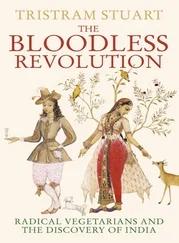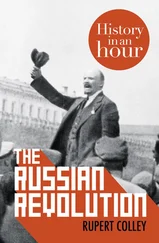Richard Pipes - The Russian Revolution
Здесь есть возможность читать онлайн «Richard Pipes - The Russian Revolution» весь текст электронной книги совершенно бесплатно (целиком полную версию без сокращений). В некоторых случаях можно слушать аудио, скачать через торрент в формате fb2 и присутствует краткое содержание. Жанр: Старинная литература, на английском языке. Описание произведения, (предисловие) а так же отзывы посетителей доступны на портале библиотеки ЛибКат.
- Название:The Russian Revolution
- Автор:
- Жанр:
- Год:неизвестен
- ISBN:нет данных
- Рейтинг книги:3 / 5. Голосов: 1
-
Избранное:Добавить в избранное
- Отзывы:
-
Ваша оценка:
- 60
- 1
- 2
- 3
- 4
- 5
The Russian Revolution: краткое содержание, описание и аннотация
Предлагаем к чтению аннотацию, описание, краткое содержание или предисловие (зависит от того, что написал сам автор книги «The Russian Revolution»). Если вы не нашли необходимую информацию о книге — напишите в комментариях, мы постараемся отыскать её.
The Russian Revolution — читать онлайн бесплатно полную книгу (весь текст) целиком
Ниже представлен текст книги, разбитый по страницам. Система сохранения места последней прочитанной страницы, позволяет с удобством читать онлайн бесплатно книгу «The Russian Revolution», без необходимости каждый раз заново искать на чём Вы остановились. Поставьте закладку, и сможете в любой момент перейти на страницу, на которой закончили чтение.
Интервал:
Закладка:
Jahrbücher
Jahrbücher für Geschichte Osteuropas
KA
Krasnyi arkhiv
KL
Krasnaia letopis’
KN
Krasnaia nov’
Lenin,
Khronika
V. I. Lenin:
Biograficheskaia Khronika, 1870–1924
, 13 vols.
(Moscow, 1970–85)
Lenin,
PSS
V. I. Lenin,
Polnoe Sobranie sochinenii
, 5th ed. 55 vols.
(Moscow, 1958–65)
Lenin,
Sochineniia
V. I. Lenin, Sochineniia
, 3rd ed., 30 vols.
(Moscow-Leningrad, 1927–33)
LN
Literaturnoe nasledstvo
LS
Leninskii sbornik
MG
Minuvshie gody
NChS
Na chuzhoi storone
ND
Novyi den’
NKh
Narodnoe khoziaistvo
NoV
Novoe vremia
NS
Nashe slovo
NV
Nash vek
NVCh
Novyi vechernyi chas
NZ
Die Neue Zeit
NZh
Novaia zhizn’
OD
L. Martov
et al
, eds.,
Obshchestvennoe dvizhenie v Rossii v
nachale XX veka
, 4 vols. (St. Petersburg, 1910–14)
Padenie
P. E. Shcheglovitov, ed.,
Padenie tsarskogo rezhima
, 7 vols.
(Leningrad, 1924–27)
PN
Poslednie novosti
PR
Proletarskaia revoliutsiia
PRiP
Proletarskaia revoliutsiia i pravo
Revoliutsiia
N. Avdeev
et al., Revoliutsiia 1917 goda:
khronika sobytii
, 6 vols. (Moscow, 1923–30)
RL
Russkaia letopis’
RM
Russkaia mysl’
RR
Russian Review
RS
Russkoe slovo
RV
Russkie vedomosti
RZ
Russkie zapiski
SB
Staryi Bol’shevik
SD
Sotsial-Demokrat
SiM
Strana i mir
SR
Slavic Review
SS
Soviet Studies
SUiR
Sobranie uzakonenii i rasporiazhenii
SV
Sotsialisticheskii vestnik
SZ
Sovremennye zapiski
VCh
Vechernyi chas
VE
Vestnik Evropy
VI
Voprosy istorii
VIKPSS
Voprosy istorii KPSS
VO
Vechernye ogni
VS
Vlast’ sovetov
VZ
Vierteljahreshefte für Zeitgeschichte
VZh
Vestnik zhizni
ZhS
Zhivoe slovo
INTRODUCTION
This book is the first attempt in any language to present a comprehensive view of the Russian Revolution, arguably the most important event of the century. There is no shortage of surveys of the subject, but they concentrate on the political and military struggles for power over Russia between 1917 and 1920. Seen from the perspective of time, however, the Russian Revolution was a great deal more than a contest for power in one country: what the victors in that contest had in mind was defined by one of its leading protagonists, Leon Trotsky, as no less than “overturning the world.” By that was meant a complete redesign of state, society, economy, and culture all over the world for the ultimate purpose of creating a new human being.
These far-reaching implications of the Russian Revolution were not evident in 1917–18, in part because the West considered Russia to lie on the periphery of the civilized world and in part because the Revolution there occurred in the midst of a World War of unprecedented destructiveness. In 1917–18 it was believed by virtually all non-Russians that what had occurred in Russia was of exclusively local importance, irrelevant to them and in any event bound to settle down once peace had been restored. It turned out otherwise. The repercussions of the Russian Revolution would be felt in every corner of the globe for the rest of the century.
Events of such magnitude have neither a clear beginning nor a neat end. Historians have long argued over the terminal dates of the Middle Ages, the Renaissance, and the Enlightenment. Similarly, there is no indisputable way to determine the time span of the Russian Revolution. What can be said with certainty is that it did not begin with the collapse of tsarism in February–March 1917 and conclude with the Bolshevik victory in the Civil War three years later. The revolutionary movement became an intrinsic element of Russian history as early as the 1860s. The first phase of the Russian Revolution in the narrow sense of the word (corresponding to the constitutional phase of the French Revolution, 1789–92) began with the violence of 1905. This was brought under control by a combination of concessions and repression, but violence resumed on an even grander scale after a hiatus of twelve years, in February 1917, culminating in the Bolshevik coup d’etat of October. After three years of fighting against internal and external opponents, the Bolsheviks succeeded in establishing undisputed mastery over most of what had been the Russian Empire. But they were as yet too weak to realize their ambitious program of economic, social, and cultural transformation. This had to be postponed for several years to give the ravaged country time to recover. The Revolution was resumed in 1927–28 and consummated ten years later after frightful upheavals that claimed millions of lives. It may be said to have run its course only with the death of Stalin in 1953, when his successors initiated and carried out, by fits and starts, a kind of counterrevolution from above, which in 1990 appears to have led to a rejection of a good part of the Revolution’s legacy.
Broadly defined, the Russian Revolution may thus be said to have lasted a century. A process of such duration in a country of Russia’s size and population was bound to be exceedingly complex. An autocratic monarchy that had ruled Russia since the fourteenth century could no longer cope with the demands of modernity and gradually lost out to a radical intelligentsia in whom commitment to extreme Utopian ideas combined with a boundless lust for power. Like all such drawn-out processes, however, it had its culminating period. In my estimation, that period was the quarter of a century extending from the outbreak of large-scale unrest at Russian universities in February 1899 to the death of Lenin in January 1924.
Because the aspirations of the intellectuals who assumed power in October 1917 were so extreme, I found it necessary to treat many topics besides the customary political-military power struggle. To the Russian revolutionaries, power was merely a means to an end, which was the remaking of the human species. In the first years of their rule they lacked the strength to attain an objective so contrary to what their people desired, but they did try and in so doing laid the foundations of the Stalinist regime, which would resume the attempt with far greater resources. I devote considerable attention to these social, economic, and cultural antecedents of Stalinism, which, even if only imperfectly realized under Lenin, from the outset lay at the very heart of the Russian Revolution.
This volume is divided into two parts.
Part I, “The Agony of the Old Regime,” describes the decay of tsarism, culminating in the mutiny of the Petrograd military garrison in February 1917, which in surprisingly short time not only brought down the monarchy but tore apart the country’s political and social fabric. It is a continuation of my Russia under the Old Regime , which traced the development of the Russian state and society from their origins to the end of the nineteenth century. Part II, “The Bolsheviks Conquer Russia,” recounts how the Bolshevik Party seized power first in Petrograd and then in the provinces inhabited by Great Russians, imposing on this region a one-party regime with its terror apparatus and centralized economic system. Both these parts appear in the present volume. A sequel, Russia under the New Regime , will deal with the Civil War, the separation and reintegration of the non-Russian borderlands, Soviet Russia’s international activities, Bolshevik cultural policies, and the Communist regime as it took shape in the final year of Lenin’s dictatorship.
Читать дальшеИнтервал:
Закладка:
Похожие книги на «The Russian Revolution»
Представляем Вашему вниманию похожие книги на «The Russian Revolution» списком для выбора. Мы отобрали схожую по названию и смыслу литературу в надежде предоставить читателям больше вариантов отыскать новые, интересные, ещё непрочитанные произведения.
Обсуждение, отзывы о книге «The Russian Revolution» и просто собственные мнения читателей. Оставьте ваши комментарии, напишите, что Вы думаете о произведении, его смысле или главных героях. Укажите что конкретно понравилось, а что нет, и почему Вы так считаете.












